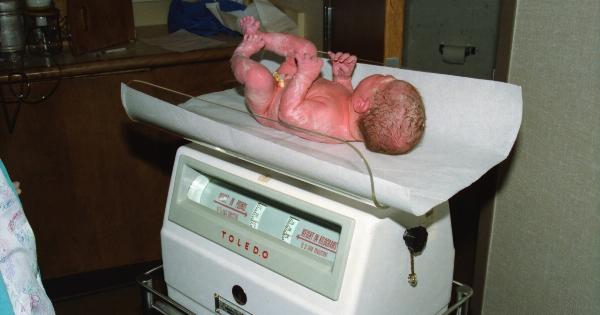Giving birth is a miraculous experience that brings joy and fulfillment to millions of women around the world. However, for some women, the journey to motherhood can be complicated and may involve a previous cesarean section (C-section).
In recent years, there has been an increasing interest in natural birth after cesarean (VBAC), with many women wondering if it is possible or not. Let’s explore this topic further and shed light on the possibilities and considerations surrounding VBAC.
What is a VBAC?
VBAC stands for vaginal birth after cesarean. It refers to giving birth vaginally after having previously undergone a C-section delivery. Traditionally, women who had a C-section were recommended to have subsequent C-sections for future births.
However, medical advancements and growing evidence have shifted the mindset, making VBAC a viable option for many women.
Factors Influencing VBAC Success
While VBAC is an option for many women, certain factors influence the chances of a successful vaginal birth after a previous C-section. Some of these factors include:.
- Prior vaginal births: Women who have given birth vaginally before, either before or after their previous C-section, have higher chances of having a successful VBAC.
- Reason for the previous C-section: The reason for the initial C-section plays a crucial role in determining if VBAC is possible. If the previous C-section was due to a specific condition that is no longer present, VBAC may be more feasible.
- Type of uterine incision: The type of incision made during the previous C-section can impact the chances of VBAC. A low transverse incision is considered favorable for VBAC, whereas a vertical or T-shaped incision may pose additional risks.
- Interval between pregnancies: The spacing between pregnancies affects VBAC success rates. A longer interval gives the body more time to heal, increasing the likelihood of a successful VBAC.
- Overall health and age: Maternal health and age have an impact on the ability to have a successful VBAC. Women with certain health conditions or advanced maternal age may face additional challenges.
Risks and Benefits of VBAC
As with any medical procedure, VBAC comes with both risks and benefits. It is important for women considering VBAC to understand these aspects:.
Risks
1. Uterine rupture: One of the primary concerns with VBAC is the risk of uterine rupture, where the scar from the previous C-section tears open during labor. While this is rare, it can be life-threatening for both the mother and the baby.
2. Failed VBAC: There is a possibility that the labor may not progress or complications may arise during a VBAC attempt, leading to an emergency C-section.
3. Infection or bleeding: The risk of infection or excessive bleeding is present during any birth, including VBAC.
Benefits
1. Shorter recovery time: Compared to a C-section, vaginal birth typically involves a shorter recovery time and is physically less demanding.
2. Avoiding surgical risks: VBAC eliminates the risks associated with surgery, such as infection, blood clots, and adverse reactions to anesthesia.
3. Future childbirth choices: Having a successful VBAC opens up more options for future childbirths, giving women the choice to have vaginal births without the need for repeat C-sections.
Preparing for a VBAC
If you are considering VBAC, it is crucial to work closely with your healthcare provider. Here are some steps to prepare for a VBAC:.
- Discuss your desire for VBAC: Openly communicate your desire for a VBAC with your healthcare provider. They will evaluate your specific situation and determine if you are a suitable candidate.
- Undergo a thorough assessment: Your healthcare provider will assess your previous C-section scar, overall health, and any potential risk factors to make an informed decision.
- Create a birth plan: Collaborate with your healthcare provider to develop a birth plan that aligns with your VBAC goals. Be prepared for potential changes based on the progression of labor.
- Attend childbirth classes: Taking childbirth classes can help you prepare physically and mentally for a VBAC. They provide valuable information and techniques to assist you during labor and delivery.
- Build a strong support system: Surround yourself with a supportive network of family, friends, and healthcare providers who understand your choice and can provide the support you need.
Alternative Options
While VBAC is a desirable choice for many women, it may not be suitable for everyone. In certain cases, alternative options can be considered:.
Repeat C-Section
In some situations, a repeat C-section may be the safest option for both the mother and the baby. This could be the case if there are concerns about uterine rupture, medical complications, or specific maternal health conditions.
Vaginal Birth Preparation
If VBAC is not recommended or chosen, aiming for a vaginal birth without a previous cesarean is still possible for some women.
Discuss the option of vaginal birth with your healthcare provider and address any concerns or risk factors that could impact the delivery.
Conclusion
In conclusion, natural birth after cesarean (VBAC) is possible for many women, depending on various factors such as previous birth history, reason for the C-section, uterine incision type, and overall health.
While VBAC comes with risks, it also offers benefits like shorter recovery time and increased future childbirth choices. It is essential to have open and honest discussions with your healthcare provider, weigh the risks and benefits, and make a well-informed decision based on your unique circumstances.
Remember, every birth journey is different, and the most important goal is a healthy outcome for both mother and baby.





























